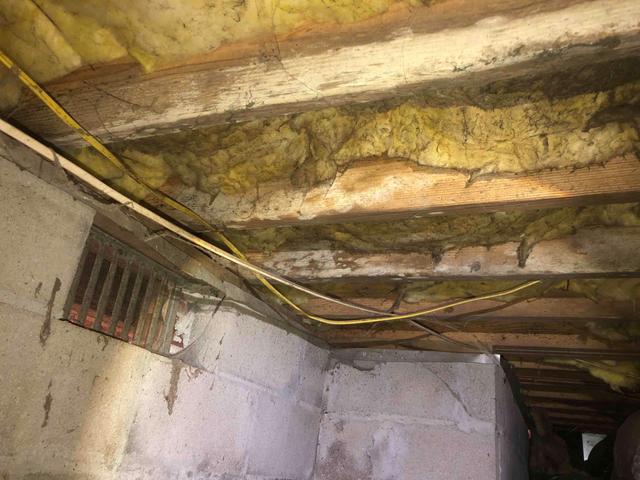
Relative Humidity
In warmer months, hot, humid air pours into the crawl space through open crawl space vents raising the relative humidity under the home.
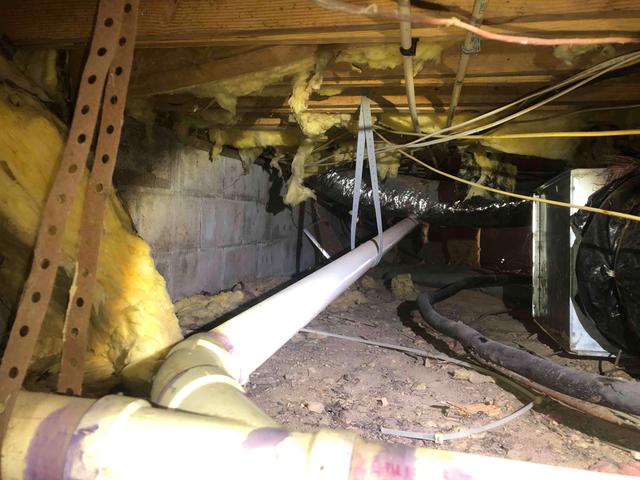
The Earth's Moisture
Moisture rises from the earth into the space also contributing to increasing the relative humidity. Because the ground is not sealed from the crawl space, this moisture rises uninhibited. This moisture causes damage to the fiberglass insulation, which absorbs it and begins to deteriorate and fall away from the floor.
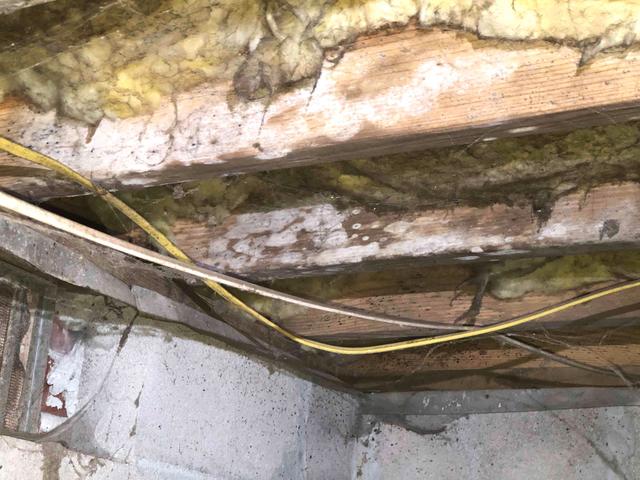
Mold and Mildew on Floor Joists
The high relative humidity and warm temperatures in the crawl space create the ideal environment for mold and mildew to grow on organic materials in the crawl space such as the floor joists and the paper backing of fiberglass insulation. This can lead to mildewy and musty odors in the home and in some cases can impact inhabitants with allergies or asthma.
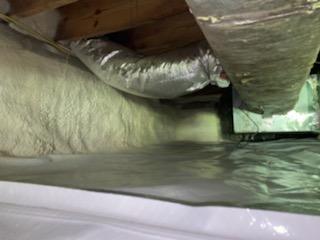
A Durable Vapor Barrier
A 20-mil CleanSpace vapor barrier is installed in the crawl space. It is laid out on the floor with all seams overlapped and sealed. The liner is also wrapped and sealed around all foundation piers and mechanically attached and sealed to the crawl space walls. This isolates the crawl space from the earth's moisture.
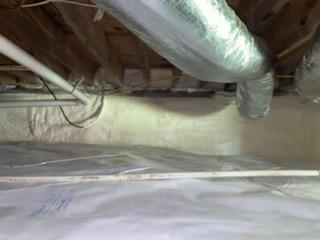
Insulated Foundation Walls
Closed-cell spray foam is applied to the foundation walls to achieve an R-10. The rim and band are also insulated, at this thickness it is acting as both an air barrier and vapor retarder. All the crawl space vents are also blocked.
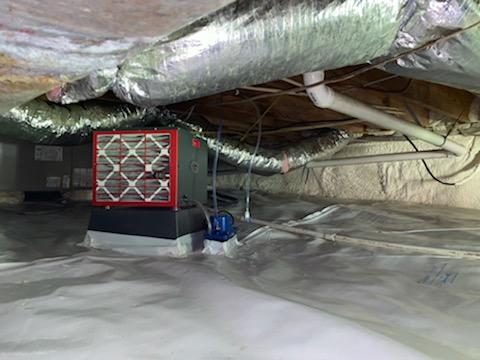
Crawl Space Dehumidifier
Finally, a dehumidifier is installed in the crawl space to control the relative humidity. Though we have prevented as much outside air and moisture as possible from entering the crawl space, if we do not control the relative humidity, the potential for mold and mildew to grow is still present. The SaniDry Sedona Dehumidifier removes excess moisture from the air in crawl space, filters the air, and circulates dry air under the home.

